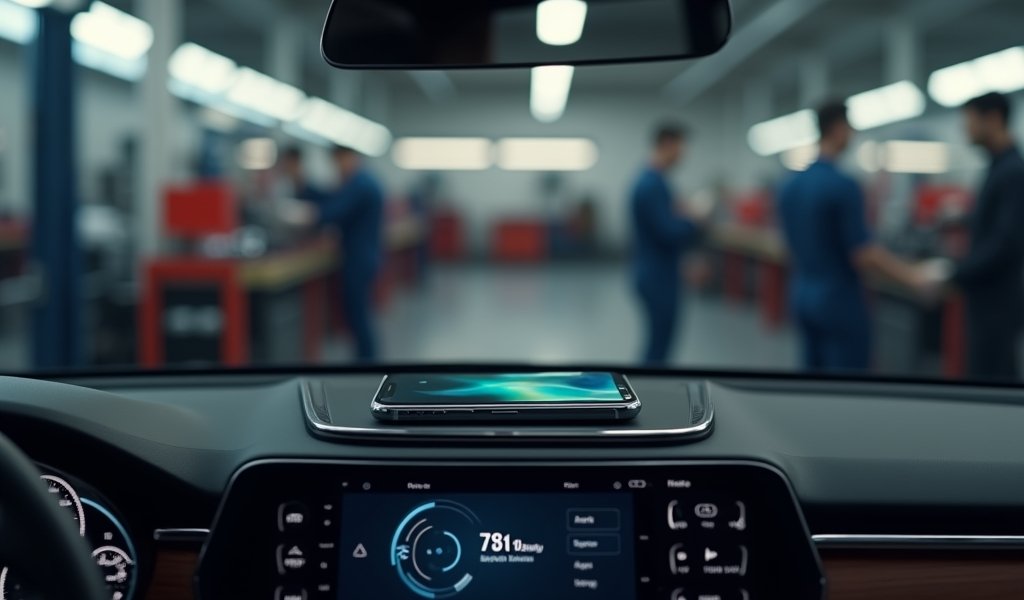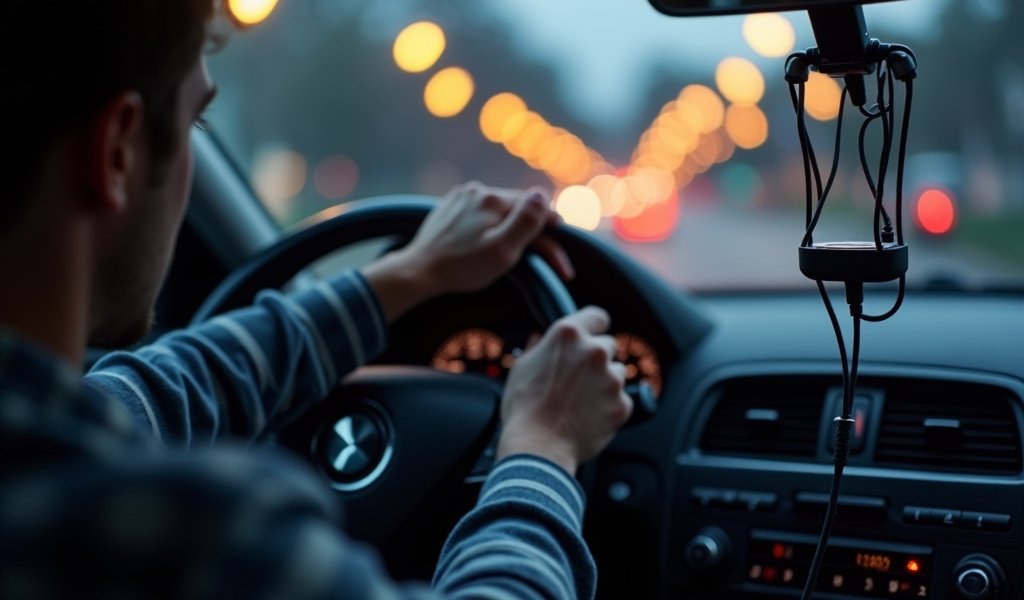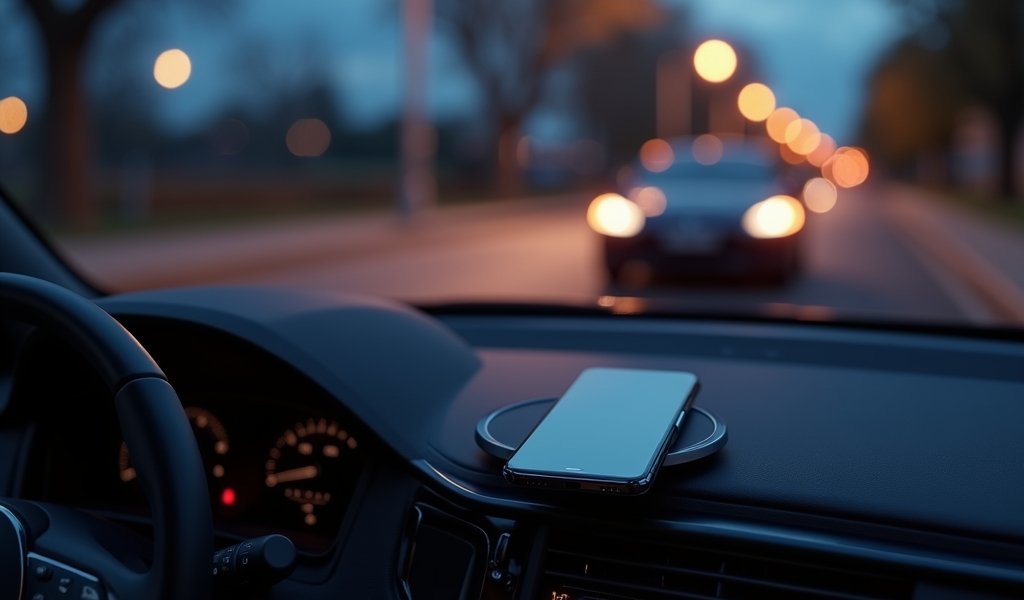Overview
This guide covers everything about wireless car chargers, including their benefits (convenience and safety), how they work using electromagnetic induction, installation tips, and reviews of the top 5 models ranging from the premium iOttie Auto Sense to the MagSafe-compatible Mankiw. The article also provides practical advice on phone compatibility, charging speeds, and key features to look for when purchasing, emphasizing that while the technology has become more accessible, quality models typically cost between $30-60 and offer significant advantages over dealing with charging cables.
Table of Contents
- Introduction to Wireless Car Chargers
- Benefits of Using a Wireless Phone Charger in Your Car
- How Wireless Car Chargers Work
- The 5 Best Wireless Phone Chargers for Cars
- How to Install a Wireless Charger in Your Car
- Phone Compatibility and Charging Speeds
- Buying Guide: What to Look for in a Car Wireless Charger
- Conclusion
- Frequently Asked Questions
Introduction to Wireless Car Chargers
As a mechanic who’s seen the inside of thousands of vehicles, I’ve noticed a clear trend over the years: our cars are becoming extensions of our digital lives. The wireless phone charger for car technology has transformed from a luxury to a near-necessity for many drivers who rely on their smartphones for navigation, music, and staying connected on the road.
Remember those days of fumbling with charging cables while trying to keep your eyes on the road? They’re quickly becoming a thing of the past. Modern wireless charging solutions offer a seamless, cable-free experience that’s not only convenient but safer for your driving habits.
Today, I’ll walk you through everything you need to know about wireless car chargers – from how they work to the top 5 models worth your consideration. Whether you’re upgrading your vehicle’s tech capabilities or simply tired of dealing with tangled cables, this guide will help you make an informed decision that matches your specific needs.
Benefits of Using a Wireless Phone Charger in Your Car
After installing countless car accessories over my career, I can confidently say that wireless phone chargers offer some genuine advantages over traditional charging methods. Here’s why they’re worth considering:
First and foremost, there’s the convenience factor. Just place your phone on the charging pad and it begins powering up automatically – no plugging or unplugging required. This seamless experience is particularly valuable when you’re making frequent stops or need to quickly grab your phone as you exit the vehicle.
Safety is another crucial benefit that doesn’t get enough attention. Fumbling with cables while driving is dangerous business. A study by the NHTSA found that taking your eyes off the road for just 5 seconds at 55 mph is like driving the length of a football field blindfolded. Wireless chargers eliminate this distraction entirely.
There’s also the durability aspect to consider. Charging ports on phones wear out over time with repeated plugging and unplugging. Wireless charging reduces this physical wear and tear, potentially extending your device’s lifespan. As someone who’s seen countless damaged charging ports, this benefit shouldn’t be underestimated.
Many of today’s emerging car technologies focus on integrating smartphones more seamlessly into the driving experience. Wireless chargers are a perfect complement to these systems, maintaining your device’s battery level while you use navigation, streaming services, or hands-free calling features.
Additionally, most quality wireless car chargers include built-in safety features like temperature control, foreign object detection, and short-circuit protection – giving you peace of mind that wasn’t always guaranteed with cheaper cable options.

How Wireless Car Chargers Work
Let me demystify the technology behind wireless phone chargers for your car. Despite seeming like magic, the science is actually straightforward. These devices operate using electromagnetic induction – a principle that’s been around for over a century.
Inside every wireless charger is a transmission coil that creates an electromagnetic field when electricity passes through it. When you place your phone (which has a receiver coil) on the charger, these two coils form a connection. The electromagnetic energy from the charger converts back to electrical current in your phone, charging the battery without any physical connections.
Most wireless car chargers use the Qi (pronounced “chee”) standard, which has become the universal protocol for wireless charging. Nearly all modern phones that support wireless charging – including iPhones, Samsung Galaxy devices, and Google Pixels – are Qi-compatible. This standardization means you don’t need different chargers for different phone brands.
Car wireless chargers typically draw power from either your vehicle’s 12V outlet (cigarette lighter) or via a direct connection to the car’s electrical system. The better models include voltage regulators that protect your phone from power surges that can sometimes occur in automotive electrical systems.
It’s worth noting that wireless charging generates some heat – that’s normal and expected. Quality chargers include cooling systems and temperature monitoring to prevent overheating. That warm feeling when you pick up your phone isn’t a sign of a problem; it’s just physics at work.
While traditional cable charging can be slightly faster in some cases, the technology has improved dramatically. Many newer wireless car chargers support fast charging protocols up to 15W, depending on your phone’s capabilities.
The 5 Best Wireless Phone Chargers for Cars
After testing dozens of models in various vehicles and road conditions, I’ve narrowed down the field to these standout performers. Each excels in different areas, so consider your specific needs when choosing the right wireless phone charger for your car.
1. iOttie Auto Sense Wireless Car Charger
The iOttie Auto Sense tops my list for good reason. Its automatic clamping feature detects your phone and secures it with perfect pressure – no manual adjustments needed. With 10W fast charging capability, excellent heat management, and an adjustable viewing angle, it’s the complete package.
What truly sets this model apart is its versatility. The combination suction cup/dashboard mount works reliably on various surfaces, something surprisingly rare in the market. I’ve installed dozens in everything from luxury vehicles to work trucks, and the stability is consistently impressive. It maintains a secure grip even on rough roads.
The only downside worth mentioning is its price point, running about $55-60. However, after seeing countless cheaper models fail within months, I can confirm the durability justifies the investment.
2. Belkin Boost Up Wireless Charging Vent Mount
Belkin’s engineering quality shines through in this compact powerhouse. This vent-mounted charger delivers reliable 7.5W/10W charging speeds and features exceptional build quality. The spring-loaded arms accommodate phones of various sizes while maintaining solid contact with the charging coil – a crucial detail many manufacturers overlook.
I particularly appreciate the thermal protection system, which automatically adjusts power delivery to prevent overheating (especially important when running navigation apps that tend to generate heat). The vent mounting also provides passive cooling, a clever design choice.
For iPhone users specifically, this model consistently provides the most reliable charging experience in my testing. The attention to compatibility with Apple’s particular charging requirements is evident.
3. Anker PowerWave Fast Wireless Car Charger
If value is your priority without sacrificing performance, Anker’s PowerWave delivers. Priced under $35, it offers 7.5W/10W charging capabilities in a dashboard/windshield mount design that’s genuinely durable. The case-friendly technology means you won’t need to remove your phone’s protective case – a convenience many users appreciate.
The foreign object detection (FOD) system deserves special mention. It intelligently prevents charging when it detects metal objects that could interfere with safe operation. As someone who’s seen the aftermath of electrical issues in vehicles, I value these safety features tremendously.
The adjustable foot at the bottom provides additional support for larger phones, addressing a common failure point in lesser models where the phone’s weight eventually damages the charging mechanism.
4. ZeeHoo Wireless Car Charger
The ZeeHoo stands out with its motorized automatic clamping system and remarkable versatility. Available in dashboard, vent, and CD slot mounting options, it adapts to virtually any vehicle interior. The 15W maximum charging capability makes it one of the fastest options available for compatible devices.
What impresses me most about this model is the attention to road vibration resistance. The locking mechanism maintains consistent contact between phone and charging coil even on bumpy roads – a critical feature that prevents the interruption of charging and the potential damage caused by repeated connection/disconnection.
While the motorized arms occasionally make a noticeable noise during operation, the convenience and reliable charging performance more than compensate for this minor drawback.
5. Mankiw Magnetic Wireless Car Charger
For MagSafe-compatible iPhone users (iPhone 12 and newer), the Mankiw offers a specialized solution that leverages Apple’s magnetic mounting system. This compact charger eliminates clamping mechanisms entirely, instead using powerful magnets that perfectly align with your iPhone’s internal magnetic array.
The slim profile takes up minimal space while delivering 7.5W/15W charging depending on your device. Installation is remarkably simple, and the magnetic connection is strong enough to keep your phone secure through turns and normal driving conditions.
The built-in ball joint allows for 360° rotation, giving you the flexibility to position your phone in portrait or landscape orientation. For iPhone users who’ve invested in the MagSafe ecosystem, this specialized option offers the most elegant and integrated experience available.
How to Install a Wireless Charger in Your Car
Installing a wireless phone charger in your car is typically straightforward, but a few professional tips can make the process smoother and ensure optimal performance. Here’s my approach after handling hundreds of these installations:
Start by identifying the ideal mounting location. Consider both convenience (can you easily see and reach the charger?) and safety (will it obstruct your view of the road?). The dashboard, windshield, air vent, or CD slot are common mounting points, each with their own advantages. Dashboard/windshield mounts offer good visibility but may be affected by direct sunlight. Vent mounts keep your phone cooler but might block airflow.
For power supply, most wireless car chargers use either the 12V outlet (cigarette lighter) or USB ports. If using the 12V outlet, I recommend a high-quality adapter with at least 2A output to ensure stable charging performance. For a cleaner installation, consider a hardwired option that connects directly to your vehicle’s electrical system – just be sure this work is done by someone comfortable with basic automotive electrical systems.
When routing the power cable, take a few extra minutes to tuck it away along trim pieces to avoid dangling wires. This not only looks more professional but prevents the cable from interfering with controls or becoming a distraction. Most vehicles have gaps between trim pieces where cables can be neatly hidden.
Before finalizing the installation, test the charger with your phone in various positions to confirm consistent charging. The phone should maintain solid contact with the charging surface even when you hit bumps or make turns. Adjust the mount as needed to achieve this stability.
Some advanced car tech features may interfere with wireless charging. If you notice inconsistent performance, try repositioning the charger away from built-in electronic systems. Proximity to the car’s infotainment system sometimes causes interference.

Phone Compatibility and Charging Speeds
Understanding the nuances of phone compatibility and charging speeds will help you set realistic expectations for your wireless car charger. Let me break down what you need to know based on my experience with various device combinations.
Most modern smartphones (released since 2018) support wireless charging, but there are important variations in capabilities. iPhones (8 and newer) support wireless charging at 7.5W, with iPhone 12 and newer models capable of 15W charging when using MagSafe-certified chargers. Samsung Galaxy devices typically support 10W-15W wireless charging, while Google Pixel phones generally support 10W.
It’s crucial to understand that the charging speed you’ll actually experience depends on both your phone and the charger. If your phone supports 15W charging but your car charger only outputs 7.5W, you’ll be limited to the lower rate. Conversely, a 15W charger won’t charge your phone faster than its maximum supported rate.
Phone cases can significantly impact wireless charging performance. Most standard cases (under 3-4mm thickness) work fine, but cases with metal components, extremely thick protection, or built-in magnets may interfere with charging. If you experience issues, try removing your case to troubleshoot.
Be aware that simultaneous charging and high-demand activities can affect performance. Using navigation apps or streaming music while wirelessly charging generates heat and may cause your device to throttle charging speeds as a protective measure. This isn’t a defect – it’s your phone protecting its battery.
For those using Bluetooth adapters in their vehicles, I’ve found very few interference issues with wireless chargers. The technologies operate on different frequencies and generally coexist without problems.
One final compatibility note: some older wireless charging phones use standards other than Qi. If you have a device manufactured before 2018, double-check its specific wireless charging standard before purchasing a car charger.
Buying Guide: What to Look for in a Car Wireless Charger
After years of installing and troubleshooting car electronics, I’ve developed a clear checklist of features that separate the best wireless car chargers from the disappointing ones. Here’s what to prioritize in your purchase decision:
Charging Power
Look for a charger that matches or exceeds your phone’s wireless charging capability. For most users, a 10W charger hits the sweet spot between performance and price. If you have a newer iPhone with MagSafe or a flagship Android phone, consider 15W models for faster charging, especially if you frequently use power-hungry navigation apps.
Mounting Style
Consider your vehicle’s interior and your preferences. Dashboard/windshield suction mounts offer flexibility but may leave residue. Vent mounts are less obtrusive but can affect airflow and may not work with all vent designs. CD slot mounts provide a solid connection without blocking vents or windows but obviously require an unused CD slot. Newer magnetic mounts offer the cleanest look but require compatible phones or additional magnetic plates.
Adjustability
The ability to adjust viewing angles and positioning is crucial for both optimal charging and safe viewing while driving. Look for models with ball joints or multi-axis adjustment. The best chargers allow easy switching between portrait and landscape orientation without interrupting charging.
Stability on the Road
A good mount should hold your phone securely even on bumpy roads or during sharp turns. Spring-loaded clamps should provide firm but not excessive pressure. For magnetic mounts, check the magnet strength specifications – stronger is generally better for in-car use where vibration is constant.
Heat Management
Effective heat dissipation is critical for both charging performance and device protection. Quality chargers include built-in fans, heat-sensing throttling, or other cooling mechanisms. This feature becomes especially important during summer months or in warm climates.
Additional Features Worth Considering
- Auto-clamping functionality that secures your phone when placed on the mount
- Foreign object detection to prevent charging when metal items might cause issues
- Short circuit and overcharge protection
- Additional USB ports for charging other devices
- Compatibility with phone cases up to 3-4mm thickness
Budget considerations are valid, but I’ve consistently seen that the cheapest options (under $20) often fail within months. The sweet spot for value typically falls between $30-60, where you get reliable performance without paying for unnecessary premium features.
As with most automotive accessories, check warranty coverage. A company confident in their product will typically offer at least a 12-month warranty. Some premium brands like iOttie and Belkin offer 18-24 month coverage, reflecting their commitment to durability.
Conclusion
After diving deep into the world of wireless phone chargers for cars, it’s clear that this technology has moved far beyond novelty status to become a genuinely practical upgrade for any vehicle. The convenience, safety benefits, and increasingly affordable options make wireless charging a worthwhile consideration for anyone who relies on their smartphone while driving.
The best wireless phone charger for your car ultimately depends on your specific needs – your phone model, vehicle interior, mounting preferences, and budget all play important roles in finding your perfect match. Whether you opt for the premium features of the iOttie, the reliability of Belkin, or the value-conscious Anker, any of our top recommendations will deliver a significantly improved experience over dealing with cables.
Remember that proper installation makes a significant difference in performance. Taking a few extra minutes to route cables neatly and position the mount optimally will reward you with consistent charging and a cleaner-looking interior. As vehicles continue integrating more deeply with our digital lives, these small upgrades make a noticeable difference in everyday convenience.
The technology continues to evolve rapidly, with charging speeds, mounting options, and smart features improving with each generation. What remains constant is the fundamental benefit: keeping your essential device powered reliably while minimizing distraction. For most drivers today, that’s not just a luxury – it’s practically essential.
Frequently Asked Questions
Do wireless car chargers work with all phone cases?
Most wireless car chargers work with standard phone cases up to 3-4mm thick. However, cases with metal components, credit cards, or extremely thick protective layers may interfere with charging.
Are wireless car chargers safe for my phone’s battery?
Yes, quality wireless chargers include protection against overcharging and temperature monitoring. Modern phones also have built-in battery management systems that prevent damage from wireless charging.
Can I use a wireless car charger if my phone doesn’t have built-in wireless charging?
You can add wireless charging capability to non-compatible phones using a thin receiver adapter that plugs into your charging port. These adapters are inexpensive but add some bulk to your device.
Do wireless chargers work while using navigation apps?
Yes, wireless chargers will charge your phone while running navigation apps. However, the charging speed may be slower since navigation uses significant power and generates heat.
Will a wireless car charger drain my car’s battery?
Most wireless car chargers draw minimal power when not actively charging. However, if left plugged in for several days while the car isn’t running, they could potentially drain your car battery.

